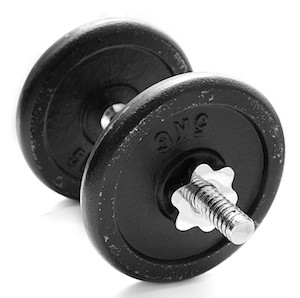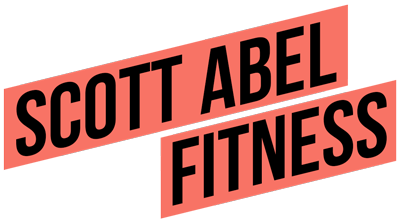 In my book The Abel Approach I discuss the training model used for proper programming and client considerations.
In my book The Abel Approach I discuss the training model used for proper programming and client considerations.
There are 5 factors to consider:
1) Effort
2) Training Strategy
3) Work Capacity
4) Recovery Capacity
5) Internal Biochemical and Hormonal Environment.
What is amazing to me is that practically NO certification programs address the elements of the training model in any kind of real-world way. It is impossible to understand the progressive adaptation response to training without using the training model to assess a client and assign a program.
In particular, elements 4 and 5 above play crucial roles in the adaptation process to training stimulus. But few people understand the working gears of “recovery capacity” and “internal biochemical and hormonal environment.” Lifestyle factors must be considered in overall assessment and program assignment.
Recently a lady writes me who is a single mom to two daughters 7 and 9 years of age. The lady is working 60-70 hours per week as well as doing her motherly duties responsibly, and is taking online education course as well.
She wants to get a program from me “to get back into shape.” The first thing I note is simply, “Okay, where is she going to find the quality time to do so in a realistic way?”
She currently is so over-burdened schedule-wise that she has resorted to bringing fast food home for dinner for her and her girls several nights per week. And while she is obviously “sick and tired of being sick and tired,” ADDING to this schedule is simply not realistic. The stress of her days is resulting in a negative internal biochemical and hormonal environment.
Moreover, the pace of her days would mean she likely wouldn’t be able to recover from even very basic forms of training.
And on top of all that, she has added to this issue of bad eating habits that reinforce the stress the pace of her day is having on her. For this lady, the “adaptive response” to adding exercise into her over-burdened schedule, would just be… more stress – and eventually exhaustion and burnout as well.
This is just one simple example of “proper assessment” and understanding “the whole” of the adaptive process.
To reiterate: lifestyle factors must be considered in assessment.
It’s amazing how few of the coaches and trainers out there understand so little about the whole of the adaptation process. In the modern training era, considerations of adequate and optimum “recovery” is the most neglected element of training considerations and program design.
In terms of resistance training, YES, a muscle must adapt to physical stress stimulus and this stress stimulus must be ample enough to create that desired adaptive response, BUT this level of stress must also be something from which the trainee can properly recover.
How unrealistic expectations damage your training
Just on the training stimulus –> recovery –> adaptive response side of the equation there area a few things that seem obvious and like common sense, but based on the example of today's trainers, obviously are anything but.
Or, as the old saying goes, “common sense ain't so common.”
For example, the less experienced the trainee, the simpler the programming and exercise protocol needs to be. But what do people do? They hop on to websites or buy magazines to see what the most advanced and experienced athletes or trainers are doing training-wise, and they think they can go out and benefit from doing the same thing.
It’s ridiculous.
It’s like being in Grade 9 Math and thinking you can benefit from doing a fourth year university calculus course.
On the other side of the equation, consider trainees with years and years of training (and adaptation) under their belts.
Beyond that, there is also the “inverse rate of adaptive response” to consider when assigning training protocol. The longer you’ve been training in terms of years the “stingier” your body gets in terms of “progressive adaptive response” regardless of how “great” your program is. That's just life. The reality here is to prevent “regression” while still working on miniscule levels of progressive adaptive response.
And this is where recovery becomes so important. But the fact remains that progressive adaptation slows over years and years of training – yet most people don’t seem to be able to grasp that fact. What does this mean by examples then?
It means that in the early years of training weak people can obviously get stronger much faster than an athlete who's been training for years and is already strong. A slow runner can obviously get faster than someone who is already fast.
Think of Olympic athletes for instance.
Many of them will train for four whole years to just improve a running time by 1/100th of a second. Yet, someone new to running can take minutes off their running times in the first couple of years.
The same applies to training for strength and development as well. The longer you train – the smarter you have to be about it… if you want to keep improving. This is why so many of my clients who have achieved and still maintain fantastic physiques are the ones who have been with me 5-10 years or more. They understand “proper, progressive, personalized programming.”
In terms of adaptive response so often the truth is that what you “need” for training after so many years is not “more of the same” but more of the same “intention.” Runners still want to run faster or longer or both; people training for strength still want to get stronger; those training for development still want better quality of muscle and muscle maturity.
But none of these trainees can simply keep doing what they’ve always done to get there. All you experience with that mentality is a fully “adapted” body, not an ongoing “adapting” one. This is where true expertise comes in.
Most of you do in fact understand the reality of the law of diminishing returns if you are a long-term trainee in the fitness arena. A beginner gets big/strong/fast or whatever pretty quickly at first and then plateaus and stagnates. When you go from being a beginner to being an intermediate, then your rates of “progressive adaptive response” slow down yet again. At this point your training regimen requires a different approach, and usually a more individualized one. But since few of you understand true individualization and how to assess your training “need’s state” you end up pinballing all over place: trying this and trying that while making the faulty assumption that any change is good change.
The reality math in all of this is that as an individual’s personal fitness/performance levels max out, and as you approach your own genetic ceiling of adaptive response the need for individualization and intricacy in your own personal program design becomes apparent.
Again: I remind you that an Olympic athlete in specific sports will train for four years to accomplish a very slight and modest improvement in personal best performance. You have to keep in mind that some training programs are more appropriate than others at certain stages of any trainee’s progression.
What this means is that the “magic” is not in the program per se, like you see in all these idiotic infomercials. No: the “magic” lays in the right application of the right program at the right time for any individual trainee. And you may stumble upon this kind of timing here and there, but you’re just as likely to miss it as well.
This is where true expertise enters the picture.
Yet, this is also where most of you end up stuck and stagnant because you begin “program hopping,” looking for magic or buying into industry hyped-up programs that consider no “personal” assessment criteria at all. Instead, they lead you to believe there is magic in the program.
The tools of the trade
This reminds me of another caveat when it comes to understanding progressive adaptation.
You need to start being realistic about the “tools of the trade” in this industry as well.
You need to be cautious of any modern exercise protocol that uses ‘fancy’ apparatus or training tools and promotes them as being “advanced.” Special equipment doesn’t advance you to the next level of fitness progression: harder and smarter work of individualized proper, practical, personalized, progressive programming is what does that for you!
More often than not: fancy new equipment can be dangerous and/or useless in program assignment.
We need to stop being under the spell of having “certifications” for simple “tools” of the trade.
These certifications for TRX or Rings make no sense if you don’t first understand how they “fit” into a properly designed program. Certification for TRX or Rings? Well, why not a certification program for the dumbbells then? Because dumbbells are the most versatile training tools in existence.
But you don’t get certified in “tools of the trade.”
I’ve said many times – a carpenter never gets “certified” in how to use a screwdriver.
The truth is that if you don’t understand the rudimentary elements of progressive adaptive response and inverse adaptive response to exercise stimulus, and if you don’t understand the importance of recovery and of internal biochemical and hormonal environment when it comes to achieving optimal adaptive response to exercise, then it isn’t going to matter much if you use a barbell, a set of dumbbells, kettlebells, medicine balls, TRX, rings, bodyweight, or old milk jugs you found on the ground.
You NEED to understand the adaptive response to exercise and all the things that affect it, and optimize it or limit it.
As usual, some of you will get it – some of you will not.
For more on this I suggest you read my book The Abel Approach: Program Design and Coaching Strategies for the New Era.
